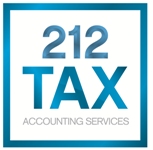For many people, saving for the post-secondary education of a child or other close relatives is an important part of personal financial planning.
There are several means to help save for continuing education, from putting money aside in an investment account to taking advantage of tax efficient ways of accumulating these funds. Among the methods that may offer tax advantages are gifts and transfers to minors, Roth IRA plans, Coverdell education savings accounts, and 529 plans. Each of these options has its own advantages and are often used in concert.
What are 529 Plans?
Established in the late 1990’s through the U.S. federal tax code, 529 plans are investment accounts offered by states or educational institutions to help taxpayers save for post-secondary education for designated beneficiaries, usually a child or grandchild. While contributions to 529 plans are not deductible on federal returns, the majority of states, including New York and Connecticut, offer full or partial state tax deductions for these contributions.
Beyond the potentially favorable treatment of plan contributions on state taxes, the important benefit of 529 plans is that investments purchased with those contributions are not subject to federal tax (or state taxes in many cases) when used to fund qualified education expenses such as tuition, fees, computers, books, and student housing.
529 plans offer a great deal of flexibility. Savings don’t need to be spent in the state offering the plan, although that may reduce the state tax benefit. Another flexibility feature is that an account owner can move funds from one state’s plan to another once a year for the same beneficiary. It’s also easy to switch beneficiaries if circumstances and needs change.
Deciding when to Use a 529 Plan
Because each state has its own plan, and most states have multiple offerings, choosing whether to use a 529 Plan and determining which one to use can seem overwhelming. Discussed below are the more basic decisions that must be made.
Prepaid Tuition Plans vs. College Savings Plans – There are two types of section 529 plans: prepaid tuition plans and college savings plans.
Prepaid tuition plans allow a saver to lock-in future tuition rates at current prices. Although beyond the scope of this blog post, that general understanding is not necessarily accurate as prepaid plans have declined significantly in popularity. New York does not offer such a plan.
College savings plans offer accounts into which savings are accumulated and invested. They are more flexible, but offer no guarantee that investments will be sufficient to cover education costs when the time comes for the beneficiary to use them.
Your State or Another State – Residents are not limited to their own states when it comes to investing in a 529 College Savings Plan. Some states offer incentives to attract out-of-state residents. Additionally, each state’s investment options have their own unique record of investment performance. For residents of states which do not offer tax deductions for contributions, such as New Jersey, savers are free to shop around for the best deals and investment programs.
In-State or Out-of-State Plans – Many states, including New York, offer in-state and out-of-state savings plans. The difference goes back to whether plan contributions are deductible for state taxes. For the saver who is highly confident that their beneficiary will attend an in-state school, choosing the in-state plan provides the benefit of the state tax deduction. However, twelve states, including New York, require residents to add previous deductions on contributions back to their state taxable income (recapture) if they later choose to go out of state.
Direct vs. Advisor Sold Plans – Most states, including New York, allow savers to choose plans based on how actively they want to be involved in choosing plan investments. The options are referred to as direct-sold plans and advisor-sold plans. With advisor-sold plans, fees are higher, but that doesn’t necessarily mean that investment returns are higher. The decision comes down to how much control the account owner wishes to have over the investments.
What are the Key Risks?
The most important risk to keep in mind is that a 529 plan is an investment, just like your 401(k) or any other investment account. Investment returns are not guaranteed.
Schedule a Consultation
Investing savings in a tax efficient manner is significant factor in successful financial planning. If you have questions regarding tax compliance or appropriately limiting IRS liabilities, contact our Manhattan CPA office to schedule a consultation with our tax accountants at 212 Tax & Accounting Services.
Request a Consultation
We are able to work with your unique schedule including after-hour appointments, most weeknights, and weekends.
Call to action
Build Growth Opportunities with Extensive Business Financial Services
We serve clients in a range of industries, including hospitality, nightlife, real estate, legal, and medical.


